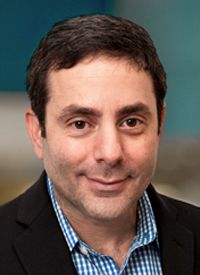Article
Breaking New Ground in Childhood Cancer
Accelerating progress in childhood cancer faces three main obstacles: funding, drugs, and family support.
Todd Cooper, DO

When I started out as an oncologist 20 years ago, I had to peer through a microscope to manually count cancer cells to confirm a diagnosis. Today, automated tools can instantly pick out a single cancer cell among 100,000 healthy ones. This and other advances have drastically improved survival rates. For example, the chance of survival for a child with acute lymphoblastic leukemia in 1975 was little better than a coin flip. Today it is better than 92%.
Oncology has a proud history of hard-won advancements, an illustrious track record of renewed life that has only accelerated in recent years. Thanks to unwavering efforts from the laboratory to the clinic and from the halls of government to fundraiser banquets, we have succeeded in lowering the cancer mortality rate among young people by more than 50% since 1975. There has never been a more exciting time to work in this field.
Yet cancer is still the leading cause of death by disease among children in the United States. Preliminary estimates indicate that 15,590 children were diagnosed with cancer in 2021 in the U.S. alone. These diagnoses are devastating to children and their families, and every lost child is an unfathomable tragedy. We can realize even greater progress in the coming years, saving countless young lives and reclaiming many decades of their vitality, if we elevate our fight against this scourge. Children are the embodiment of our world’s future and caring for them is a sacred responsibility.
The Challenges to Overcome
Accelerating progress in childhood cancer faces three main obstacles: funding, drugs, and family support.
First, significant progress requires significant funding. Childhood cancer accounts for just 4% of the National Cancer Institute (NIH) budget. While that is proportionally more per patient than adult cancers, there are unique challenges in pediatric research and drug discovery that require more resources. Most top pediatric centers rely on philanthropic donations to bridge the gap between NIH funding and what is necessary to move the needle.
Next is the need for new drugs to treat childhood cancers. Drug development overwhelmingly focuses on the more lucrative market for adults. Many cancer drugs don’t get approved for children until years after they become available for adults. Furthermore, companies discard potential treatments that aren’t effective for adults even if they show promise in children. The bottom line is it’s often just not profitable to develop new treatments for children. Researchers must work with industry and regulatory partners to develop drugs specifically with children in mind.
Finally, long-term social, emotional, and psychological support for families is another area of need. A child’s cancer diagnosis turns a family’s life upside down overnight, so such support is critical and is proven to deliver better outcomes. Much like the ongoing mental health crisis, more funding and experts are needed to deliver ongoing 360-degree support through all phases – diagnosis, treatment and life after.
The Path Forward
These challenges are daunting. But we are also bringing powerful new weapons to the fight: genomics, immunotherapy, and large-scale partnerships.
Understanding a cancer is the first step to treating it. At Seattle Children’s, our researchers are studying the origins of some of the most aggressive cancers, opening the door to what is known as precision medicine. For instance, we sequence the genome of every relapsed leukemia patient, then match them with novel targeted therapies. This leads to improved cure rates and decreased toxicity. It is the future of childhood cancer treatments.
Immunotherapy is another exciting new field that harnesses the body’s own immune system to fight cancer. In the past, our only courses of action were highly toxic chemotherapies or radiation. Now we can enlist a child’s own natural defenses to fight cancer. For instance, with clinical trials involving CAR T-cell therapy, we can genetically modify a patient’s white blood cells to fight a specific cancer. This is time-consuming and expensive, so researchers are working on “off-the-shelf” cells that would mean faster, cheaper treatment without having to extract cells from sick and weakened patients.
New initiatives and partnerships are also changing the game. Many forms of childhood cancer are rare, which has made it hard for any one facility to perform meaningful research. Programs like Cancer Moonshot and others are connecting researchers, patients, and data in ways never before possible. Fighting cancer is a team sport and joining forces across many institutions allows us to drive substantial progress.
As we celebrate the amazing progress of recent years and look with hope to the future, it is time to recommit to achieving the breakthroughs that are within our grasp. The Biden administration’s 2022 budget proposal includes the creation of the Advanced Research Projects Agency for Health (ARPA-H), a $6.5 billion program to speed research into a range of diseases, including cancer. We respectfully urge Congress to support this proposed investment as a way to catalyze meaningful advances in pediatric disease research that could lead to life-saving cures and therapeutics. If we renew our focus on funding, new therapies, and long-term support for families, just imagine what the next 20 years could look like.








